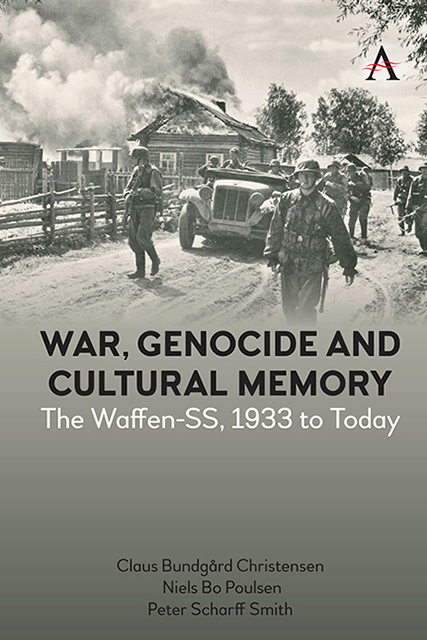Book contents
- Frontmatter
- Contents
- About the Authors
- Foreword
- Chapter One Introduction
- Part I The Organisational and Military History of the Waffen-SS
- Part II Ideology, Discipline and Punishment in the Waffen-SS
- Part III A European Nazi Army: Foreigners in the Waffen-SS
- Part IV Soldiers and War Criminals
- Part V Waffen-SS After 1945
- Epilogue The Nazi’s European Soldiers
- Appendix
- List of Abbreviations
- Bibliography
- Index
Chapter Fourteen - Prosecution and Flight
Published online by Cambridge University Press: 08 June 2023
- Frontmatter
- Contents
- About the Authors
- Foreword
- Chapter One Introduction
- Part I The Organisational and Military History of the Waffen-SS
- Part II Ideology, Discipline and Punishment in the Waffen-SS
- Part III A European Nazi Army: Foreigners in the Waffen-SS
- Part IV Soldiers and War Criminals
- Part V Waffen-SS After 1945
- Epilogue The Nazi’s European Soldiers
- Appendix
- List of Abbreviations
- Bibliography
- Index
Summary
In March 1945, an American interrogation officer asked Unterscharführer Kurt Kretschmer of Division Das Reich about his division's massacres and other atrocities in Southern France. He replied, ‘I do not know what happened, I was not there.’ The scope of the Nazi crimes made the investigation and prosecution gigantic tasks. In many cases ‘a perfect crime’ was at hand. Apart from the perpetrators, there were hardly any surviving witnesses. But even if evidence was extant it was uncertain that this would fall into the hands of the prosecutors and the judges. In the early processes, the war and the chaos of the times were still so close that the prosecution lacked a proper survey and the knowledge that later historical research based on archival material has been able to provide. Under these conditions, the perpetrators had an opportunity of lying their way out of their complicity in a way that would not be possible today.
Apart from being faced with an enormous burden of investigation, the Allies were hampered by big politics and the economic and military interests. In many cases, political-pragmatic considerations took precedence over the judicial processes. Therefore, the prosecution of the Nazi henchmen was imperfect in more than one way. First, because some sentences were passed on the basis of limited investigation and documentation. Secondly, because of limited resources or political consideration, many perpetrators were either not prosecuted at all, had very mild sentences or were granted amnesties.
The Sentence at Nuremberg
In November 1945, in the South-German city of Nuremberg, the Allies started the legal reckoning with the Nazi top tier. Over the following year, not only 22 surviving top Nazis but also the entire administrative and political system constructed by the Nazis, were being prosecuted. The tribunal had the authority to sentence whole institutions and organisations as criminals. The reason for this was to ease later prosecution of individual persons; hence the membership of such bodies would in itself become a criminal act. From 1 September to 1 October 1946, the sentences were passed: 12 death sentences, seven imprisonments and three acquittals, the NSDAP, the Gestapo, the SD and the SS were declared criminal organisations.
Along with other SS organisations, the Waffen-SS was dealt with in this sentence. In their testimonies, General Hausser and others tried to convince the court that the Waffen-SS was the fourth service of the Wehrmacht, completely separate from the SS.
- Type
- Chapter
- Information
- War, Genocide and Cultural MemoryThe Waffen-SS, 1933 to Today, pp. 283 - 296Publisher: Anthem PressPrint publication year: 2022

